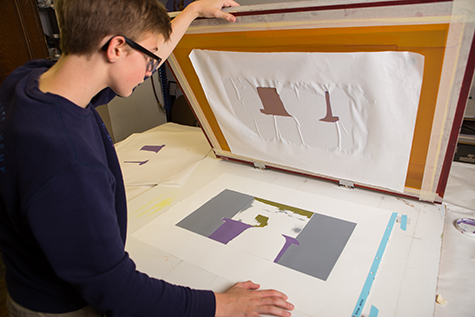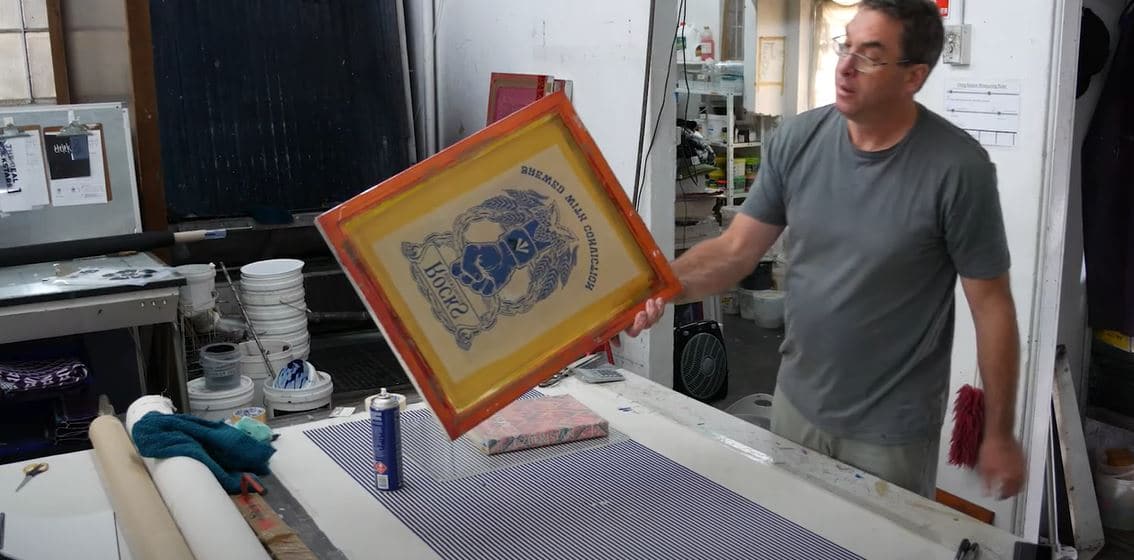ChatGPT said: What customers are saying in 10:9 Design reviews: insights
Discover the Various Kinds Of Screen Printing Techniques for Your Following Project
Screen printing uses a diverse variety of techniques that can improve any innovative project. From traditional methods like serigraphy to modern-day innovations such as direct-to-garment printing, each strategy has its distinct benefits. Specialty choices, consisting of green and metal inks, present a lot more possibilities. Recognizing these methods can considerably impact the last outcome. Nevertheless, the difficulty exists in picking one of the most suitable method for specific requirements and wanted effects. What aspects should one consider?

The Fundamentals of Screen Printing
Although screen printing may appear complicated, it is fundamentally a simple process that entails transferring ink with a mesh screen onto various surface areas. The strategy begins with the creation of a stencil, which defines the layout to be published. This stencil is connected to a mesh screen, normally made of polyester or nylon. Once the pattern is in location, ink is related to the screen and pressed through the mesh utilizing a squeegee, leading to the wanted pattern being printed on the underlying product.
Screen printing can be executed on a variety of substratums, consisting of paper, material, and plastic, making it a flexible option for various projects. The procedure enables for vibrant shades and intricate designs, making it prominent in sectors such as fashion, art, and advertising. Understanding these essentials outfits people with the fundamental knowledge called for to discover more innovative strategies in screen printing.
Traditional Screen Printing Techniques
Traditional screen printing strategies have been used for centuries, maintaining the workmanship and creativity of this method. This method uses a mesh screen to move ink onto a substrate, such as material or paper, permitting dynamic and durable designs. The procedure starts with creating a pattern, which obstructs particular areas of the screen to regulate where the ink will certainly be applied.
One preferred method is serigraphy, usually made use of for restricted editions and artistic prints. Another is using water-based inks, which are green and offer a soft feel on fabrics - 10:9 Design Embroidery. Furthermore, conventional techniques can include hands-on printing, where artisans use ink with a squeegee, ensuring accuracy and attention to detail
These techniques continue to be valued in the sector for their tactile quality and the special structures they generate, interesting both designers and customers that value the heritage of screen printing.
Digital Screen Printing Innovations
As the need for faster production and modification in the printing industry has actually risen, electronic screen printing advancements have become a game-changer. This innovation mixes typical screen printing methods with digital procedures, enabling quick prototyping and detailed styles that were formerly hard to achieve. One significant innovation is the introduction of direct-to-garment (DTG) printing, which promotes premium, full-color prints on numerous fabrics without the demand for displays. Additionally, innovations in ink solutions have actually caused green alternatives that maintain vivid colors while decreasing environmental effect. Making use of automated systems better improves manufacturing, lowering labor expenses and enhancing accuracy. These technologies not only accommodate little batch orders and tailored designs yet additionally enable quicker turn-around times, making them excellent for services concentrated on meeting client needs in a busy market. Digital screen printing, as a result, stands for a crucial advancement in the domain of printing strategies.
Specialized Screen Printing Methods
Checking out specialized screen printing approaches discloses a varied selection of strategies that push the boundaries of creative thinking and functionality in the printing market. Among these, glow-in-the-dark inks offer a special aesthetic effect, making layouts come active in low-light conditions. Metal inks, understood for their sparkling finish, include a touch of high-end to published materials. Another innovative technique is discharge printing, which eliminates dye from the fabric rather of including ink, causing a soft, vintage feel. High-density printing produces an increased texture externally, improving tactile interaction. Additionally, water-based inks are getting popularity for their vivid shades and decreased ecological effect. Each of these specialized methods accommodates specific style requirements, allowing brands and artists to produce standout products that reverberate with their target markets. By leveraging these techniques, services can boost their screen printing projects to brand-new elevations, ensuring memorable impacts.
Eco-Friendly Screen Printing Options
Environment-friendly screen printing choices are acquiring traction as the industry changes in the direction of sustainability. Lasting ink options and using naturally degradable materials are vital elements in reducing the ecological effect of the printing procedure. By adopting these techniques, screen printers can add to a more lasting future while maintaining premium results.
Sustainable Ink Options

Biodegradable Products Use
As the screen printing industry advances, the unification of naturally degradable materials is becoming increasingly essential for ecologically conscious techniques. Designers and producers are now discovering inks and substratums made from natural, sustainable resources that disintegrate much more successfully than standard counterparts. These biodegradable options minimize plastic waste and decrease ecological influence, aligning with the growing demand for lasting products.
Usual examples include water-based inks and organic cotton click here now fabrics, both of which decrease unsafe chemicals and advertise eco-friendliness. Brand names that take on these materials typically boost their market charm, drawing in customers that focus on sustainability. As recognition of ecological problems remains to increase, the shift towards naturally degradable materials in screen printing is most likely to get energy, promoting a greener industry requirement.
Choosing the Right Technique for Your Task
How can one identify the most ideal screen printing strategy for a details task? The decision rests on a number of elements, consisting of the product to be printed on, the complexity of the design, and the desired production volume - 10:9 Design Screen Printing Texas. As an example, direct-to-garment printing is suitable for detailed designs with countless shades, while traditional screen printing stands out for larger runs of less complex graphics
Furthermore, consideration of the end-use of the printed item is necessary. great post to read For outside applications, techniques that offer resilience and climate resistance, such as plastisol ink, might be favored. Conversely, environmentally-conscious projects might take advantage of water-based inks or eco-friendly products.
Ultimately, recognizing the task's one-of-a-kind needs enables an enlightened selection, making certain both aesthetic appeal and useful longevity. By evaluating design intricacy, material compatibility, and manufacturing scale, one can properly choose the most suitable screen printing technique to fulfill their job's objectives.
Often Asked Concerns
What Is the Background of Screen Printing?
Screen printing came from old China around 1000 AD, developing with Japan and Europe. By the 20th century, it came to be popular in business art and style, transforming how designs were generated and distributed internationally.

Exactly how Do I Prepare Artwork for Screen Printing?
To prepare artwork for screen printing, one must guarantee high resolution, make use of an ideal shade setting, create different layers for every color, and transform text to outlines, guaranteeing compatibility with the printing process and wanted end result.
What Materials Are Best for Screen Printing?
The very best materials for screen printing include top quality inks, sturdy screens, and suitable substrates like cotton, polyester, or blends. In addition, making use of proper solution and squeegees can boost the printing procedure and results.
Can I Screen Publish at Home?
Yes, screen printing in the house is feasible. With the best products, configuration, and strategies, individuals can create high-quality prints. Nonetheless, careful factor to consider of work area and equipment is necessary for successful results.

What Are Common Mistakes in Screen Printing?
Common mistakes in screen printing consist of incorrect direct exposure times, inadequate ink consistency, imbalance of screens, inadequate cleaning of materials, and ignoring weblink to test prints. These mistakes can compromise the high quality and accuracy of the end product.
Screen printing may seem complicated, it is fundamentally a simple process that entails transferring ink through a mesh screen onto numerous surfaces. As the demand for faster production and personalization in the printing industry has actually risen, electronic screen printing advancements have actually arised as a game-changer. Checking out specialized screen printing approaches exposes a varied range of strategies that press the borders of imagination and functionality in the printing market. The ideal products for screen printing consist of high-quality inks, long lasting displays, and appropriate substrates like cotton, polyester, or blends (10:9 Design Screen Printing Texas). Common blunders in screen printing consist of incorrect direct exposure times, poor ink uniformity, misalignment of screens, inadequate cleansing of materials, and overlooking to examine prints